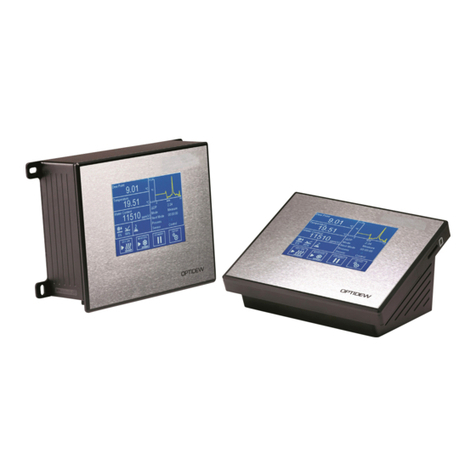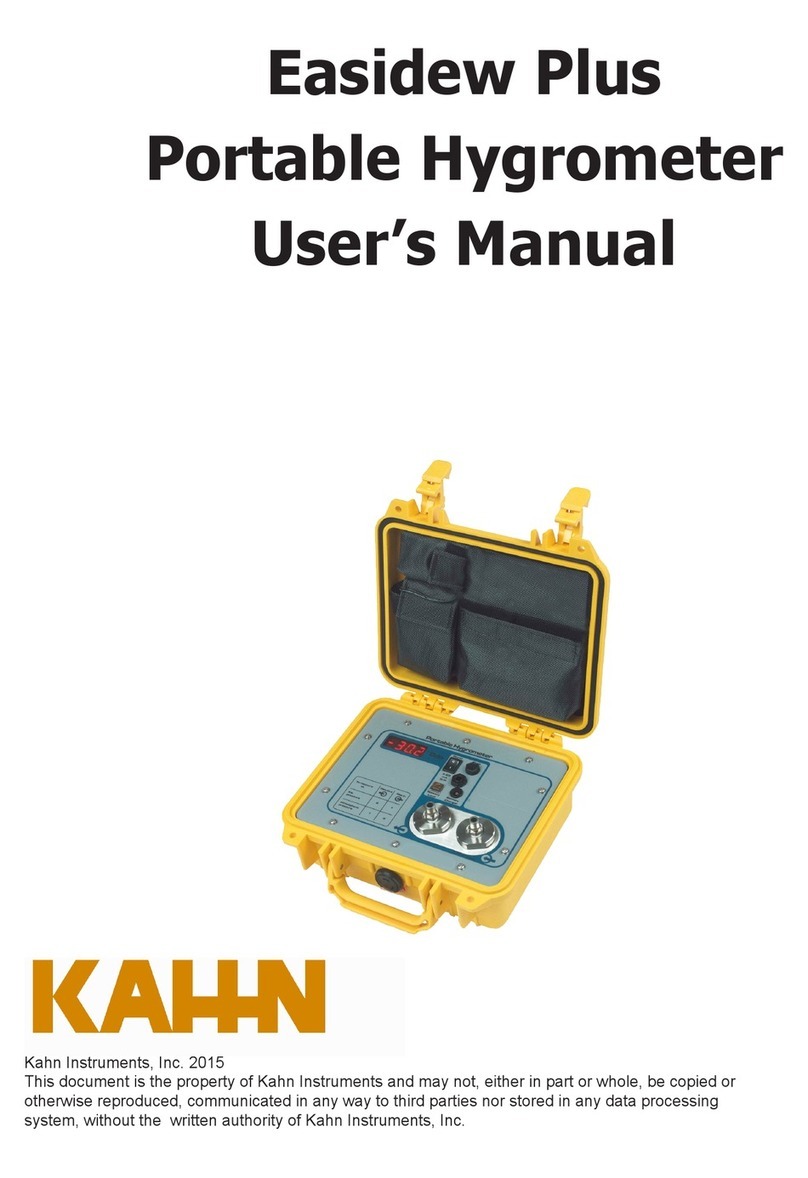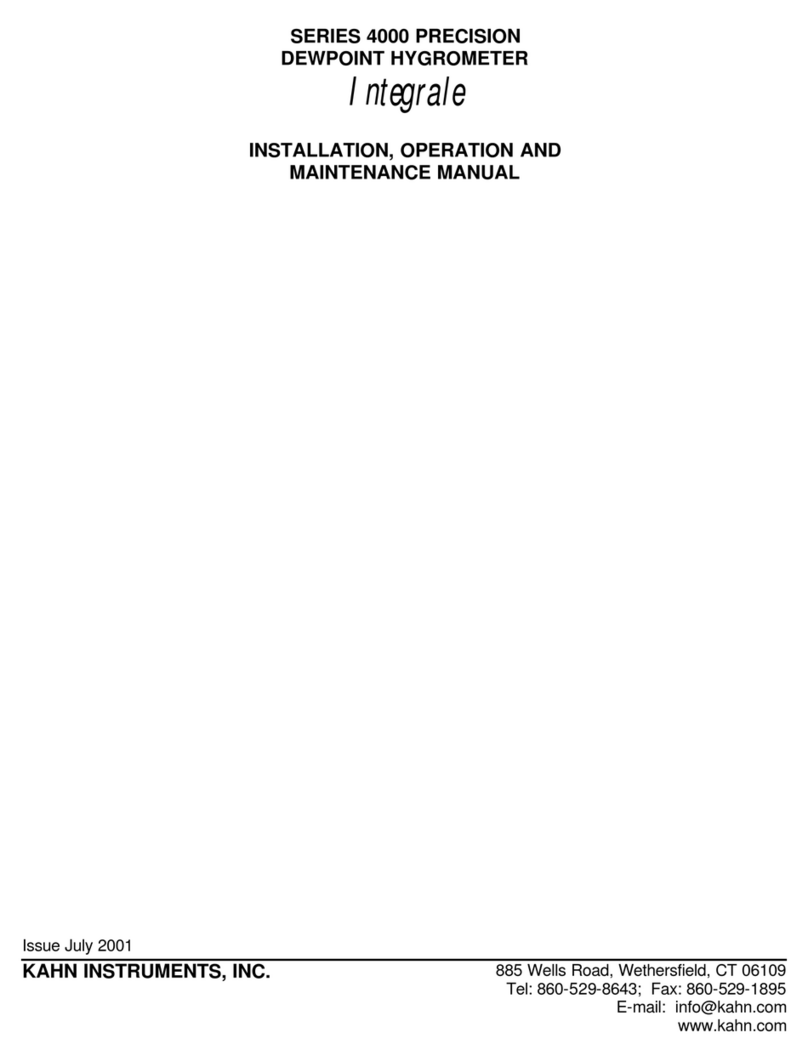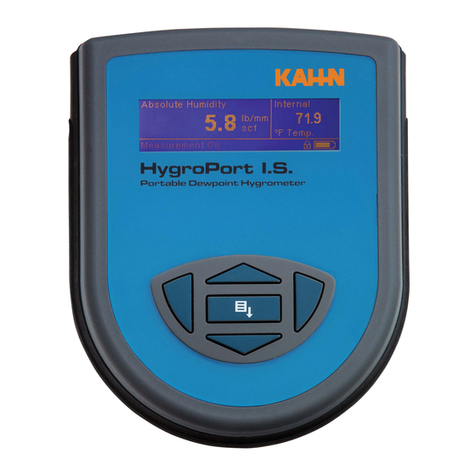
Optisure Remote User’s Manual
Kahn Instruments iii
1 INTRODUCTION ................................................................................................1
2 INSTALLATION ..................................................................................................2
2.1 Safety................................................................................................................ 2
2.2 Unpacking the Instrument................................................................................... 2
2.3 Operating Requirements ..................................................................................... 3
2.3.1 Environmental Requirements ......................................................................... 3
2.3.2 Electrical Requirements ................................................................................. 3
2.4 Exterior Layout................................................................................................... 3
2.4.1 Front Panel................................................................................................... 3
2.4.2 Rear Panel.................................................................................................... 4
2.5 Rear Panel Connections ...................................................................................... 6
2.5.1 Power Supply Input....................................................................................... 6
2.5.2 Analog Output Connections............................................................................ 7
2.5.3 Alarm Output Connections ............................................................................. 8
2.5.4 Dew-Point Sensor Connection ...................................................................... 10
2.5.5 Remote PRT Probe ..................................................................................... 10
2.5.6 USB Communications Port Connector............................................................ 11
2.5.7 Ethernet Port (Optional) .............................................................................. 11
2.5.8 RS232/485 Port (Optional)........................................................................... 12
2.5.9 Remote Pressure Transducer (Optional) ........................................................ 13
3 USER INTERFACE ............................................................................................14
3.1 Main Display .................................................................................................... 14
3.1.1 Main Screen................................................................................................ 14
4.1 Operating Cycle................................................................................................ 22
4.2 Operating Guide ............................................................................................... 23
4.2.1 Description ................................................................................................. 23
4.2.2 Operating Practice....................................................................................... 23
4.4 First Time Operation......................................................................................... 29
4.5 Operational Functions ....................................................................................... 29
4.5.1 DCC Function.............................................................................................. 29
4.5.2 MAXCOOL Function ..................................................................................... 29
4.5.3 Frost Assurance Technology (FAST) .............................................................. 30
4.5.4 STANDBY Mode........................................................................................... 30
4.5.5 Parameter Conversions & Pressure Compensation ......................................... 30
4.5.6 Data Logging.............................................................................................. 30
4.5.7 Minimum measurable dew points ................................................................. 31
5 MAINTENANCE................................................................................................32
5.1 Safety.............................................................................................................. 32
5.2 Fuse Replacement ........................................................................................... 32
5.3 Sensor Mirror Cleaning...................................................................................... 33
6 CALIBRATION..................................................................................................34
6.1 Traceability ...................................................................................................... 34
Contents
Safety ................................................................................................................................ v
Electrical Safety ........................................................................................................... v
Pressure Safety............................................................................................................ v
Repair ........................................................................................................................ v
Calibration................................................................................................................... v
Abbreviations......................................................................................................................vi
Warnings ............................................................................................................................vi































